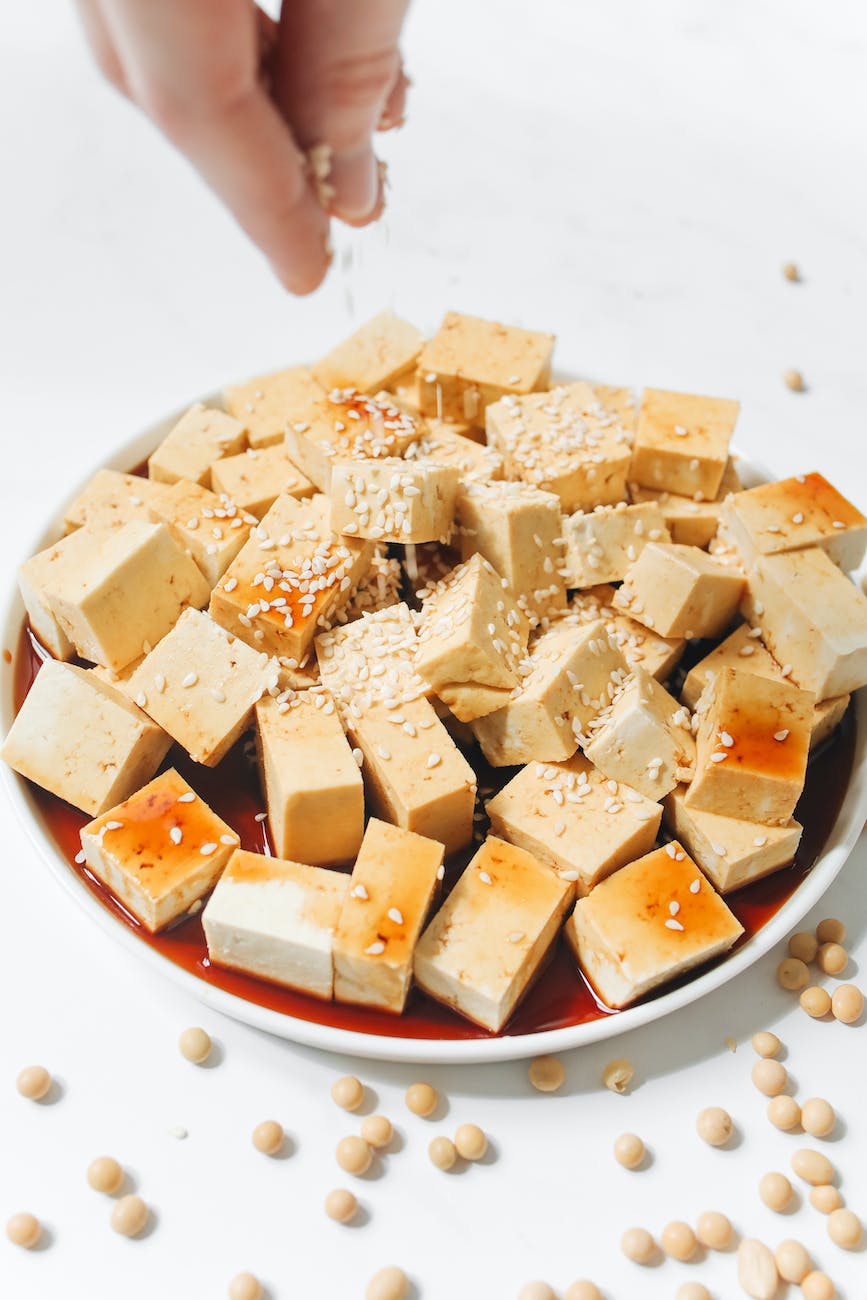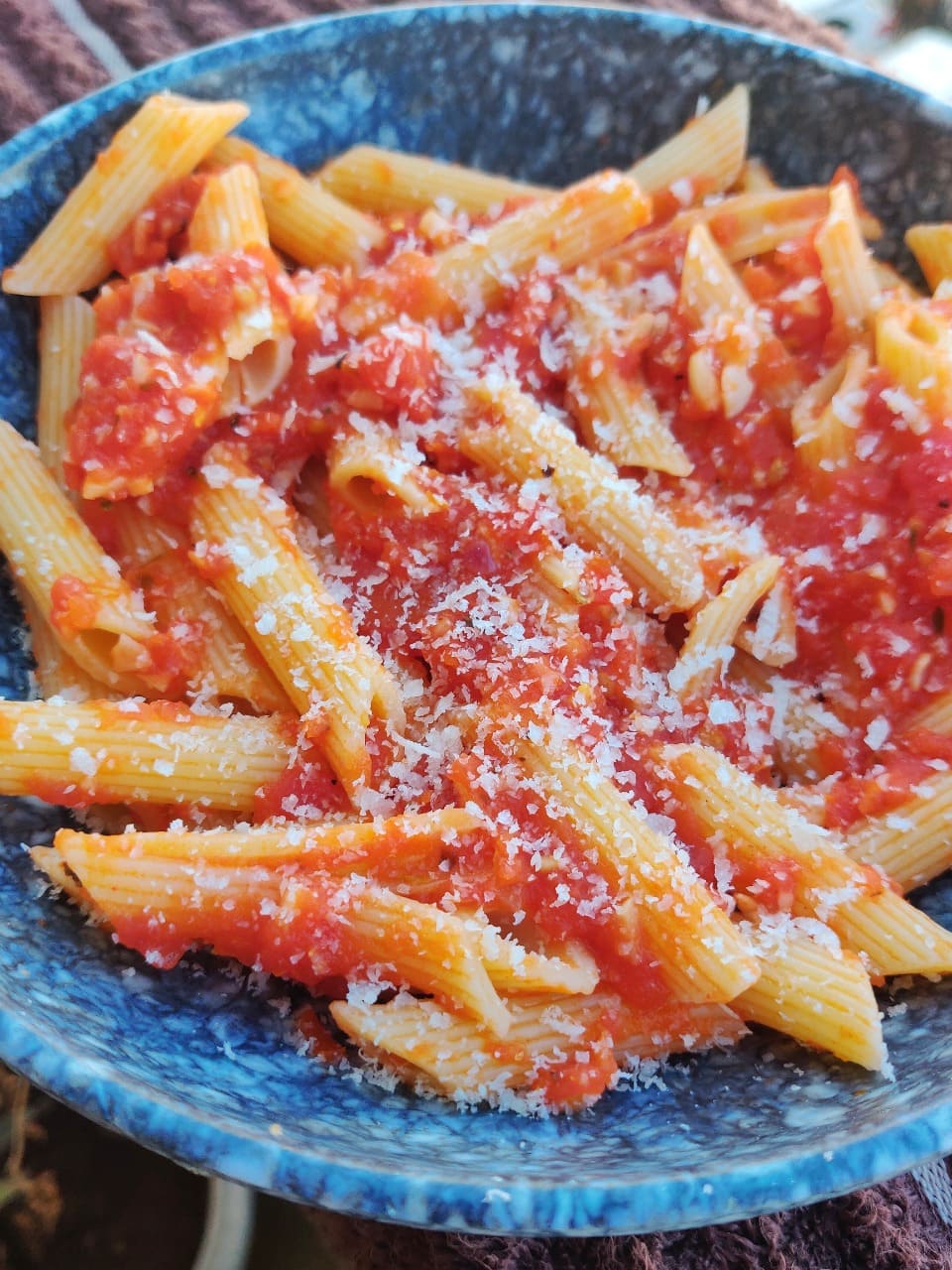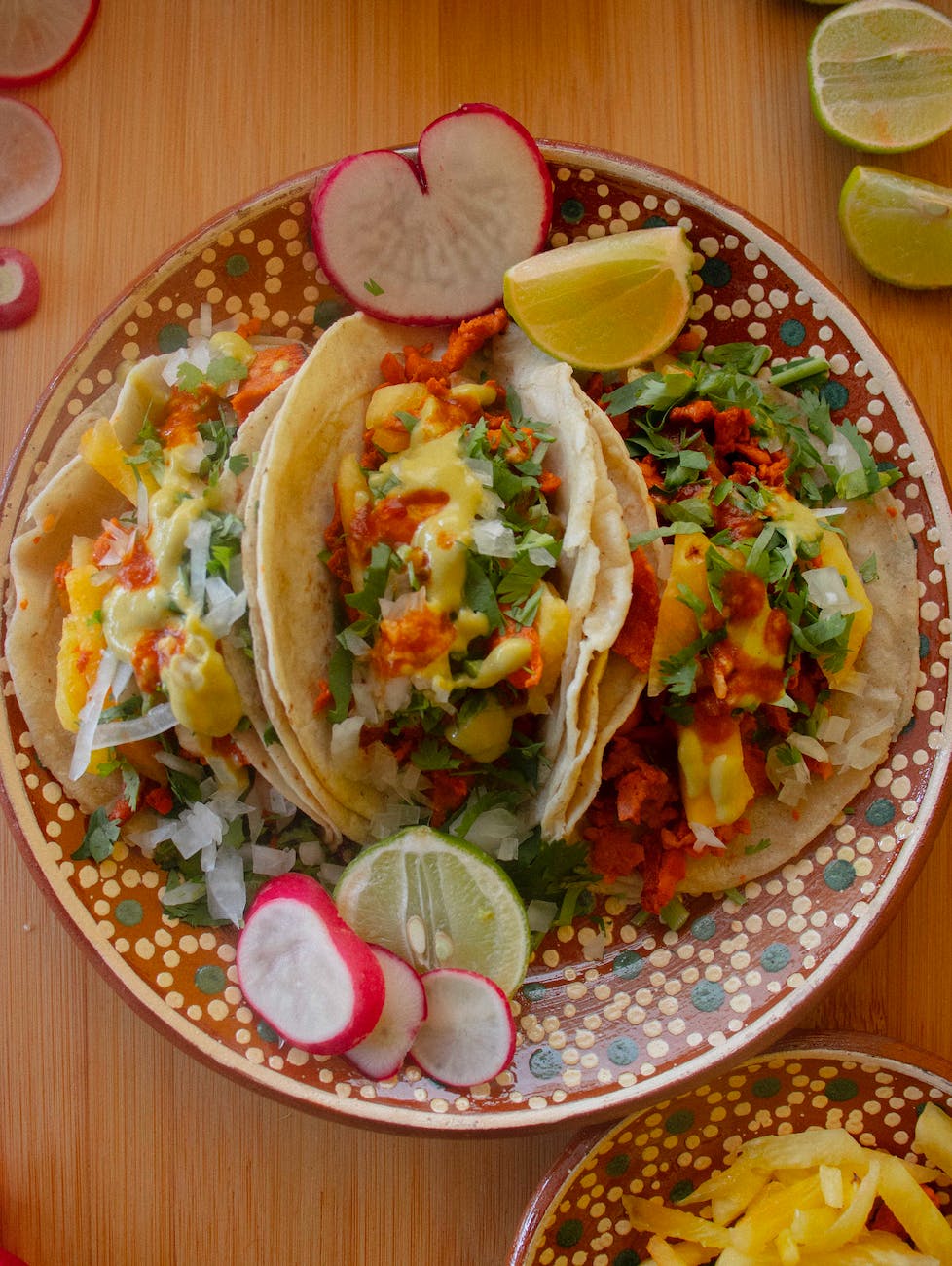
Who says breakfast is only for the morning? Break the rules and embrace the joy of breakfast for dinner with these delectable tofu-based meal prep ideas. Tofu, with its incredible versatility and high protein content, takes center stage in these breakfast-inspired dishes, providing a plant-based alternative to traditional breakfast proteins. Whether you’re craving the comforting sweetness of pancakes or the savory goodness of omelettes and breakfast burritos, these tofu-tastic recipes will satisfy your cravings while adding a nutritious and protein-rich twist to your dinner table. 🌱🌯🌮
🥞 Tofu Pancakes: Indulge in fluffy and wholesome tofu pancakes that will make your breakfast-for-dinner dreams come true. Start by blending silken tofu, oats, plant-based milk, and a touch of sweetness in a blender until smooth. Transfer the mixture to a bowl and stir in whole wheat flour, baking powder, and a pinch of salt. Cook the batter on a preheated griddle until golden brown, flipping once to ensure even cooking. Serve these protein-packed pancakes with your favorite toppings such as fresh berries, maple syrup, and a dollop of plant-based yogurt. These pancakes not only satisfy your breakfast cravings but also provide a filling and nourishing dinner option.
🍳 Tofu Scramble: Enjoy the classic breakfast favorite of scrambled eggs with a plant-based twist by creating a flavorful tofu scramble. Crumble firm tofu with your hands to resemble scrambled eggs and set it aside. In a pan, sauté a medley of vegetables such as bell peppers, onions, and spinach until they are tender. Add the crumbled tofu to the pan and season with turmeric, nutritional yeast, and a pinch of black salt for an authentic eggy flavor. Stir everything together until well combined and heated through. Serve the tofu scramble alongside whole grain toast, avocado slices, and a sprinkle of fresh herbs for a complete and protein-rich breakfast-for-dinner experience.
🌯 Tofu Breakfast Burritos: Wrap up the flavors of breakfast in a convenient and satisfying tofu breakfast burrito. Start by sautéing tofu with a blend of spices such as cumin, paprika, garlic powder, and a pinch of chili flakes for a kick of heat. Once the tofu is cooked, load a tortilla with the tofu scramble, black beans, diced tomatoes, sliced avocado, and a drizzle of hot sauce. Roll up the tortilla tightly, tucking in the sides to secure the filling. These protein-packed breakfast burritos can be prepared ahead of time, wrapped in foil or parchment paper, and refrigerated. When you’re ready for your breakfast-for-dinner feast, simply warm them up in the oven or microwave for a quick and satisfying meal.
🥓 Tofu Bacon and Veggie Wrap: Craving the smoky and savory flavors of bacon? Try tofu bacon as a delicious and plant-based alternative. Slice firm tofu into thin strips and marinate them in a mixture of soy sauce, liquid smoke, maple syrup, and spices like smoked paprika, garlic powder, and a dash of black pepper. Allow the tofu to marinate for at least 30 minutes to absorb the flavors. In a skillet, heat some oil and cook the marinated tofu until it becomes crispy and golden brown. Load a tortilla with the tofu bacon, along with sautéed vegetables like bell peppers, onions, and mushrooms. Wrap it up tightly and enjoy a satisfying and protein-rich meal that satisfies your bacon cravings in a more sustainable way.
🥣 Tofu Parfait: Indulge in a delightful and protein-packed tofu parfait for a breakfast-for-dinner treat. Blend silken tofu with your choice of sweetener like maple syrup or honey, a splash of vanilla extract, and a pinch of salt until smooth and creamy. In a glass or bowl, layer the tofu mixture with your favorite granola, fresh berries, and a drizzle of nut butter or honey. Repeat the layers to create a beautiful and delicious parfait. This easy-to-make dish offers a balance of flavors and textures, with the creamy tofu, crunchy granola, and burst of fruity sweetness from the berries. It’s a perfect way to end your breakfast-for-dinner feast on a high note.
Embrace the joy of breakfast at dinnertime with these tantalizing tofu-based meal prep ideas. Let your creativity soar as you customize these recipes to your taste preferences, experimenting with different flavors, toppings, and additions. Don’t forget to capture your creations and share them with us! 📸 Tag your breakfast-for-dinner tofu dishes with #MasalaMonk and @Masala.Monk on Instagram or Pinterest to join our vibrant community of food enthusiasts.
Save this post for future meal prep inspiration and prepare to enjoy the deliciousness of breakfast for dinner with these tofu-tastic recipes.













